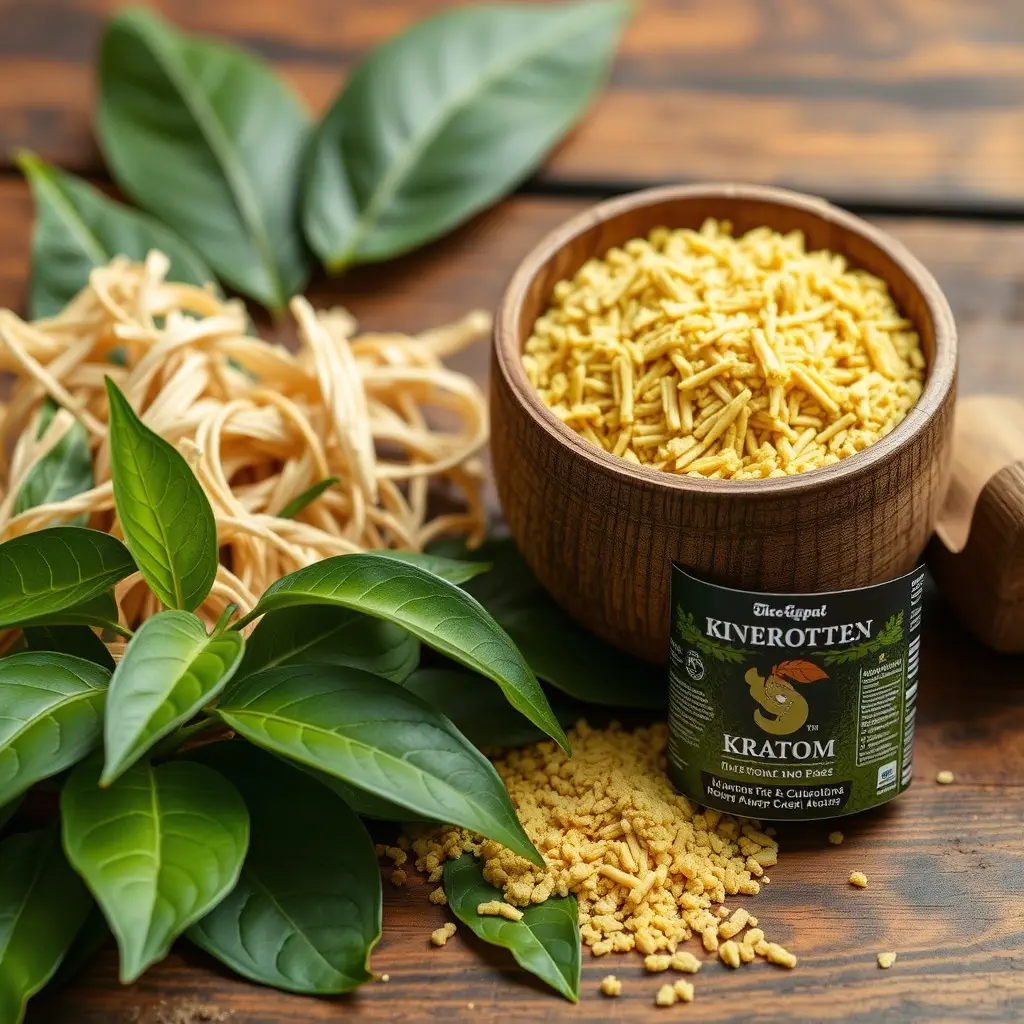Kratom, an herb from Southeast Asia, is gaining popularity among athletes and military personnel for its potential ergogenic properties like boosting energy, reducing fatigue, and improving focus. While the U.S. Army doesn't currently test for kratom, safe use requires caution, proper dosage, strain selection, and understanding individual tolerances, especially for those with health considerations or engaging in high-intensity activities. It's crucial to consult healthcare professionals to ensure safe integration with other supplements or medications.
“Unleash your athletic potential with a unique approach to peak physical conditioning: Kratom. This natural herb has gained attention for its potential benefits in the fitness realm, especially among athletes and military personnel. From improving focus and endurance to aiding recovery, Kratom is making waves as a performance enhancer.
This article explores the science behind Kratom’s effectiveness, its role in rigorous training regimens, and offers guidance on safe supplementation practices. Discover how Kratom can be a game-changer for athletes, even with ongoing questions about its testing in competitive settings, such as the military.”
- Understanding Kratom and Its Potential Benefits for Athletes
- The Role of Kratom in Army Physical Training and Fitness Standards
- Navigating the Science and Safety of Kratom Supplementation for Optimal Performance
Understanding Kratom and Its Potential Benefits for Athletes

Kratom, a natural herb from Southeast Asia, has gained attention among athletes and fitness enthusiasts due to its potential ergogenic properties. Often referred to as a “game-changer” for physical conditioning, kratom is known for its ability to enhance energy levels, reduce fatigue, and improve focus. The active compounds in kratom, particularly mitragynine and 7-hydroxymitragynine, interact with opioid receptors in the body, leading to increased motivation and a reduced perception of effort during intense workouts. This can be especially beneficial for military personnel or athletes who undergo rigorous training regimens, as kratom may help them push through limits and maintain peak performance.
Contrary to popular belief, the US Army does not currently test for kratom use among its members. However, as awareness grows about its potential benefits and safety when used responsibly, some athletes and military professionals incorporate kratom into their wellness routines. It’s important to emphasize that while kratom may offer advantages in physical conditioning, it should be approached with caution and under professional guidance. Proper dosage, strain selection, and understanding individual tolerances are crucial factors to ensure safe and effective use, especially for those who engage in high-intensity activities or have specific health considerations.
The Role of Kratom in Army Physical Training and Fitness Standards

In the demanding world of military physical training, where strength, endurance, and agility are paramount, soldiers often seek natural means to enhance their performance. Kratom, a herb with ancient roots in Southeast Asia, has gained attention for its potential benefits in fitness and conditioning. While the U.S. Army, like many other branches, does not currently include kratom as a permitted supplement, its rigorous fitness standards encourage exploration of safe, natural methods to boost physical capabilities.
Kratom’s unique properties, including its ability to provide energy, reduce fatigue, and enhance focus, have sparked interest among athletes and fitness enthusiasts. Some military personnel who engage in intense training regimens use kratom to support their physical conditioning, believing it can aid in muscle recovery and overall well-being. However, it’s crucial to emphasize that any consideration of kratom should be approached with caution and under professional guidance, especially within the strict regulations of military life, where drug testing and health protocols are stringent, including the question of whether the army tests for kratom.
Navigating the Science and Safety of Kratom Supplementation for Optimal Performance

Kratom, a herb gaining traction in fitness and military circles, has sparked interest due to its potential performance-enhancing effects. However, navigating its science and safety is crucial for optimal results, especially considering the rigorous physical demands placed on athletes and soldiers. The U.S. Army, known for its strict testing protocols, does not currently test for kratom, indicating limited evidence of widespread misuse within the ranks. This absence of formal regulation allows individuals to explore kratom’s benefits, which include pain relief, increased energy, and enhanced focus—all desirable traits for peak physical conditioning.
Research into kratom’s mechanisms suggests it interacts with opioid receptors in the brain, offering analgesic effects while potentially reducing the risk of addiction compared to prescription opioids. Moreover, studies point to its ability to boost mood and reduce anxiety, factors that can significantly impact performance during intense training sessions or high-stress situations. However, individual responses vary, and proper dosage, strain selection, and consulting healthcare professionals are essential to ensure safety and mitigate potential side effects, especially when combining kratom with other supplements or medications.
Kratom has emerged as a potential performance-enhancing tool for athletes, with its historical use in physical training gaining modern scientific interest. As discussed, it can aid in muscle recovery, reduce anxiety during intense workouts, and increase overall endurance. However, it’s crucial to approach kratom supplementation cautiously. The military’s focus on strict fitness standards, including testing for substances like kratom, underscores the need for rigorous research and responsible use. By understanding its benefits and risks, athletes can make informed decisions, ensuring they stay within legal boundaries while maximizing their peak physical conditioning.






